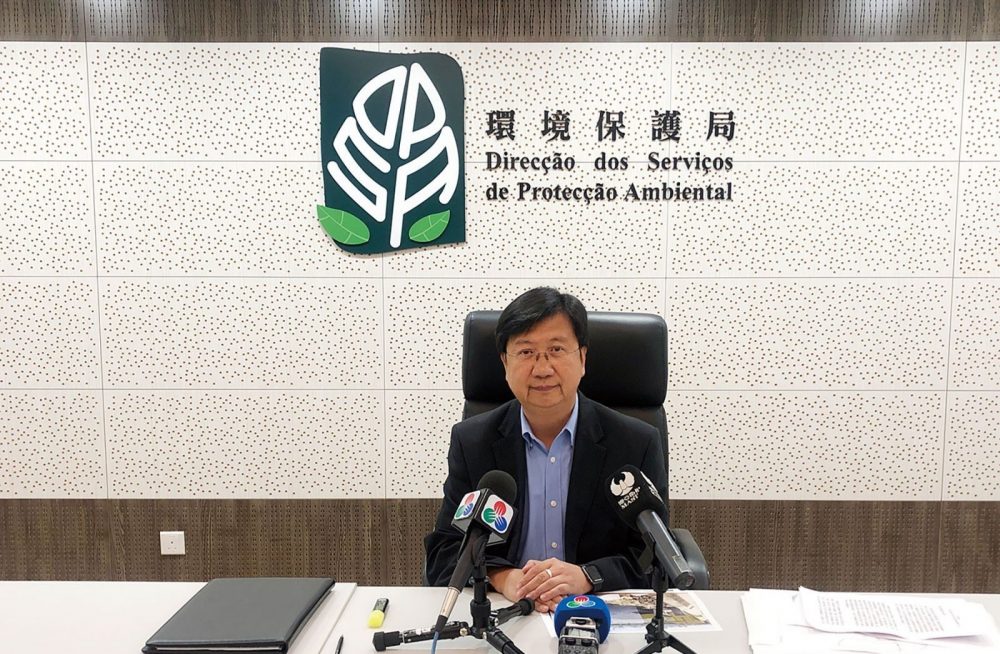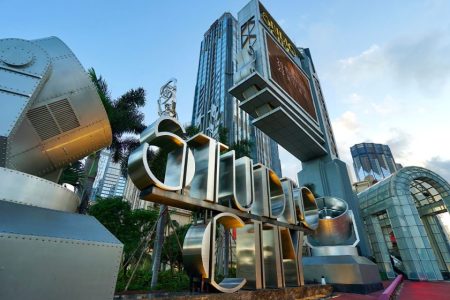Environmental Protection Bureau (DSPA) Director Raymond Tam Vai Man said on Tuesday that his bureau will remove some of the silt polluted by wastewater along the northern coast of Areia Preta district, and plant mangroves in the remaining silt, so as to solve “once and for all” the waterfront stench that has been affecting residents in the area for years.
Tam made the remarks during a press conference at the bureau in Estrada de D. Maria II on Tuesday.
Tam revealed on Friday that a project to tackle the long-standing evil smelling problem affecting residents living close to the northern coast of Areia Preta district was completed in June. The project, which got off the ground in 2017, was about building sewage interception facilities to collect waste- water at the outlets of rainwater drains off the Areia Preta northern coast and to divert the collected wastewater – through pressure pipes – to the nearby Macau Peninsula Wastewater Treatment Plant.

Tam spoke to reporters on Friday after attending a current affairs phone-in programme hosted by Ou Mun Tin Toi, the Chinese-language radio channel of government- owned broadcaster TDM.
Speaking to reporters on Friday, Tam said that his bureau discovered in late 2016 that wastewater was being discharged into the sea at five or six rainwater drain outlets off the Areia Preta coast. Tam said that the slow water flow off the coast there caused wastewater to stagnate, resulting in a strong disgusting odour there.
Tam said on Friday that therefore his bureau, the Municipal Affairs Bureau (IAM) and the Lands, Public Works and Transport Bureau (DSSOPT) jointly launched the sewage interception project in 2017 and that the project was completed in June. Pumping facilities in the area came into operation last month when wastewater started to be intercepted and diverted to the Macau Peninsula Wastewater Treatment Plant. Tam said on Friday that now the polluted water sources issue had been “fundamentally solved”, describing the situation as “a breakthrough”.
The Environmental Protection Bureau hastily convened the press conference Tuesday afternoon to elaborate on the ongoing and upcoming measures to solve the stinking problem off the Areia Preta northern coast once and for all, following local media reports published on Tuesday according to which some residents in the area have complained that the strong stink has still not been improved.
Addressing Tuesday’s press conference, Tam reiterated that after the completion of the sewage interception project, wastewater was no longer being discharged into the sea off the Areia Preta coast, so that the sources of the stench have been “fundamentally solved”.
Tam said the reason the residents living in the area are still being affected by the reek is that the accumulated silt along the coast has been in contact with the discharged wastewater for a long time. Tam said his bureau’s next step was to carry out ecological restoration measures to solve the issue. Tam said that his bureau would remove some of the silt along the coast in collaboration with the Marine and Water Bureau (DSAMA), after which his bureau would plant mangroves in the remaining silt so as to absorb the long-accumulated pollutant in the remaining silt.
According to the Macau Post Daily, Tam noted that September is not a suitable month for mangroves to be planted. Tam said that for now his bureau would first prepare the saplings, and plant them along the coast throughout next spring. Tam said that therefore it would take time for his bureau to completely tackle the effluvium issue, urging the affected area’s residents to show some understanding.




